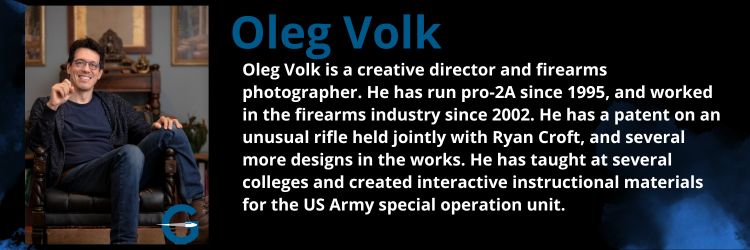Shooting Competitions: A Comprehensive Guide
Marksmanship competitions predate firearms. The first recorded firearm competitions were held in late 14th century German states. Many of the technical advances, such as rifling, range-graduated sights, and sets trigger, first appeared on target guns. In America, early competition events took the form of turkey shoots and similar practical scenarios. Later in the 19th century, military style marksmanship challenges came to the fore. Today, there’s a context for nearly every taste.
IPSC (International Practical Shooting Confederation)
IPSC (International Practical Shooting Confederation, since 1976) started as an American sport but quickly spread world-wide. Shot with full-power ammunition, this discipline blends accuracy, speed, and power. Over time, the scenarios lost most of the tactical elements. Many competitors choose Open division allowing “race” guns specialized for the sport.
Targets are specially designed cardboard silhouettes with faintly visible scoring marks, some marked as “no shoot” bystanders. In some countries, such as Russia, legal restrictions on handguns turned this into a shotgun sport. In America, USPSA handles IPSC events.
IDPA (International Defensive Pistol Association)
IDPA (International Defensive Pistol Association, since 1996) events are held all over the world, with rules adjusted to reflect local legal restrictions. Stages are scenario-based, optimized for concealed carry practices and firearms. Magazine capacity is limited to 10, mainly a holdover from the 1994-2004 ban period. Besides the US, upcoming matches will be held in Italy, South Africa, Lithuania, Slovenia, Finland, Chile, Thailand, Czechia, Hungary, and others.
Rules emphasize scoring based on time and accuracy, but also require use of cover for reloading, and other tactical elements. Although envisioned as a more realistic alternative to IPSC, IDPA has its own game elements. The two disciplines continue to co-exist, and the targets they use are the same.
SCSA (Steel Challenge Shooting Association)
SCSA (Steel Challenge Shooting Association, since 1981) uses eight courses of fire with five steel targets of various sizes and shapes each. Scoring is simpler than the sports mentioned above, and speed is emphasized above all other factors.
Shot with rimfire and centerfire pistols, and also with pistol-caliber carbines, these events separate shooters into more categories on the basis of firearm design and accessories. Since 2007, these events have also been organized by USPSA.
RCSA (Rimfire Challenge Shooting Association)
RCSA (Rimfire Challenge Shooting Association, since 2008) overlaps with SCSA in some ways, but it focuses purely on rimfire guns. Started by Ruger, then run by NSSF, and finally branched out on its own, it blends speed and accuracy. Thanks to the lower power factor, these events are highly popular with junior and senior shoots. Targets are steel of various sizes and shapes.
IMGA (International Multi-Gun Association)
IMGA (International Multi-Gun Association), IDPA, USPSA, United Shooting Sports League all offer rule sets governing three-gun competitions. In three-gun, centerfire pistol, rifle, and shotgun are used against a variety of steel targets. With Limited, Tactical, Heavy Metal, Open, and Outlaw Open divisions, there’s something for everybody in this space.
Stages vary greatly, but usually aim to simulate combat conditions. The original concept probably came from the competitions organized by Soldier of Fortune magazine in the late 1970s. USPSA formalized the event around 1990. Most competitors use carts to move gear around, but Trooper class exists for those who carry everything at once.
Cowboy Action Shooting (CAS)
Cowboy Action Shooting (CAS, since early 1980s) can be considered a subset of three-gun, as it’s shot with a pair of revolvers, a PCC, and a shotgun — all of pre-1899 design. Many events include a degree of historic reenactment, with shootings dressing up and acting in character.
Ammunition is usually on the lower end of the power scale, as speed and accuracy on steel are the only factors in scoring. About twenty countries hold CAS events. In Russia, these are less formal and jokingly called “Makhno Guerilla” shoots, after a particularly flamboyant Ukrainian insurgent from the Russian Civil War.
Benchrest Shooting
Benchrest shooting focuses on accuracy above all, with scoring in one or two of the categories: accuracy and precision (group size). Heavy rifles with powerful scopes are fired from supports at distant targets. Wildcat cartridges are common. The emphasis is on load development and shooting technique, especially adjusting for wind. World Benchrest Shooting Federation (WBSF) is the main governing body, with additional domestic organization. Shooting distances range from 100 to 1000 yards.
Bullseye Shooting
Handheld equivalent of benchrest would be bullseye shooting. Rifle and handgun are shot off-hand, with the emphasis on accuracy. Typical ranges are 10 and 25 meters. Guns are usually iron sighted, and optimized in every way for precision, with features like anatomical grips and electronic triggers. Bullseye is an Olympic sport, though firearms are slowly giving way to air guns and lasers.
Clay Shooting
Clay shooting covers a variety of disciplines, from simpler single-launcher trap to two-launcher skeet to multi-launcher sporting clays. Trap has been an Olympic discipline since 1900. Since shotguns remain the most publicly accessible type of firearm worldwide, the number of variations on clay games is considerable. The importance of shogun fit makes gunsmith involvement almost obligatory for serious competitors.
Pin Shooting
Pin shooting makes use of discarded bowling pins for targets. This sport is speed-based, but accuracy plays a big role: a precise hit on the top of a pin removes it more effectively than an easier hit on the base. Similarly, metallic silhouette shooting favors high accuracy, but with less time emphasis. Competitors aim at thick metal silhouettes of animals set at 25 to 500 yards, depending on the firearms used: at extended ranges, only hits on certain parts of the targets guarantee a knock-down.
Service Firearm Competitions
Service firearm competitions focus on current and historic military weapons. Annual Camp Perry shoot is probably the most famous of those events. Depending on class, arms used may be stock or customized, but in any case starting out as military models. Biathlon started out as a form of military rifle competition, though the current form has been reduced to rimfire. This type of competition gained popularity in the UK and the German states, but today mainly persists in the US, Switzerland, and Finland.
This list is by no means all-inclusive, but does cover the most popular shooting disciplines.
Written by: Oleg Volk, Firearms Photographer


